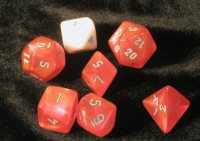 |
Classical and Quantum Monte Carlo Method |
考试: 6月13日(周三), 14:30到16:30, 1101教室.
exam: June 13th (Wed.), 14:30 to 16:30,Classroom 1101.
上课时间调整到星期二下午(9、10),教室改在2205。
(updated) course time: Tuesday 16:45--18:15, Classroom 2205.
Graduate level course on Monte Carlo methods
This course offers a systematic introduction to one of the most powerful and versatile numerical technique for large complex systems. The Monte Carlo method can be applied to solve virtually any problem where one is interested in finding some system property averaged (with the appropriate weight) over a multitude of possible system states. Important applications can be found in natural sciences, engineering, behavioral studies, and finance, to name a few.
The course starts with a short introduction to the probability theory and algorithms for generating random numbers — indeed, there is nothing “random” or “probabilistic” about computers following a deterministic set of code instructions. It is followed by the theory of Monte Carlo sampling techniques used in simulations of classical models; these include cluster, invaded cluster, histogram, multiple histogram, entropic, tempering, parallel tempering and other approaches. The main text for this part of the course is the “Monte Carlo Methods in Statistical Physics” book by Newman and Barkema. The book is easy to read and it offers a good coverage of classical methods developed prior to 1999 though the actual order of presenting the course material is different. Also, less time is spent on the discussion of programming tricks used in writing codes. Instead, more recent state-of-the-art algorithmic developments and such as Worm Algorithm and Wang-Landau version of the entropic sampling are covered.
The last part of the course deals with quantum Monte Carlo methods. Since there are no textbooks yet which cover significant recent developments in the field, students are supposed to study lecture notes and research papers to understand (i) when and how quantum mechanical problems can be mapped to classical ones (ii) what are the simulation objects and their states which emerge from the mapping, and (iii) which methods are best suited for the efficient sampling of the resulting configuration space. The learning curve starts with the Variational and Diffusion Monte Carlo methods used for simulations of the ground state (zero tempetaure) properties. Feynman path-integral representation of quantum mechanics and diagrammatic expansions are introduced next. The course concludes with the discussion of the most efficient modern methods used to work with path-integrals and diagrams.
preliminary list of topics to be covered: (click here)